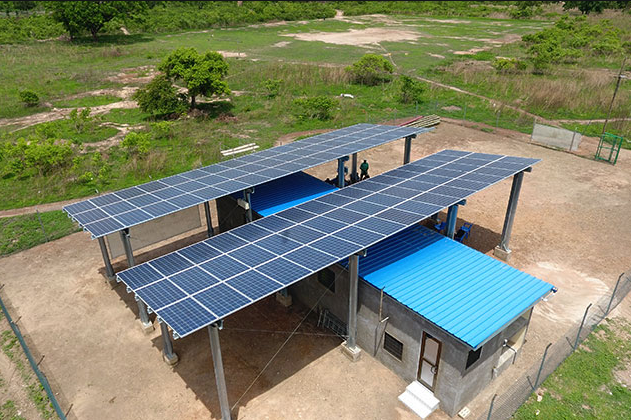Kenya’s government continues to forge ahead with an ambitious initiative for universal electrification and distributed energy, with state utility Kenya Power and Lighting (KPLC) launching a $6.7 million plan for 23 off-grid minigrids, the term used for microgrids in Africa.

Twenty-seven solar-diesel minigrids are already up and running in rural villages. Going off grid makes sense because connecting them, and the new batch of 23, to the national grid wouldn’t be profitable in all cases for Kenya Power. And in some cases it would be too difficult, given the terrain and remote locations.
Providing energy access to villagers enhances lives and livelihoods, said David Mwaniki, director of Kenya Power.
“Access to sufficient and reliable electricity will help support the productive and income generating activities of local communities to stimulate growth, create jobs and reduce poverty in rural areas,” Malinki said.
Eva Lee, Kenya research director for the advocacy group, Power For All, noted that every 1 MW of minigrids translates into 180 jobs. In addition, using off-grid solar and minigrid electricity saves rural households $43–100 per year.
“On top of these direct benefits, minigrid electricity enables the use of irrigation pump and other commercial and agro-processing appliances, and therefore, contributes to income growth and productive use job creation,” Lee said in a interview with Microgrid Knowledge.
Solar will be the main energy resource used to fuel the off-grid minigrids. Diesel generators will be used to fill in the gaps and provide back-up when the renewables are insufficient. In addition, small-scale wind power will be used where feasible.
A friendly environment for off-grid minigrids
The French Development Agency (AFD) is providing financial support for the rural minigrid project.
“Kenya is one of the most mature and advanced markets for the off-grid solar sector,” Lee said. “The consumers’ acceptance of solar technology makes Kenya an interesting destination for investment. World Bank, for example, announced a $40 million investment in expanding 147 minigrids to 14 remote counties. The investment from AfD (African Development Bank) in KPLC’s minigrid projects confirmed this trend.”
Kenya is one of the few countries, alongside Ethiopia, Myanmar and others, that develops a geospatial plan for electrification and has a regulatory framework to foster private sector minigrid development, as does Bangladesh, Cambodia, Nigeria and others, according to Lee, citing the World Bank ESMAP 2019 report.
“These provide a friendly environment for private investment and are evidence that make Kenya stand out as a minigrid market…A friendly market environment with clear policy guidelines and public commitment is very often one of the most important considerations for private developers,” Lee said.
Such an environment lower risks faced by minigrid developers. One risk is the expansion of the grid into the territory, which could negate need for the minigrid.
A friendly market also lowers the cost of financing. Minigrids in Kenya, notably, have a median capital cost at $2,100, including diesel minigrids, which is significantly lower than the global median of $4,400, according to Lee.
Public sector-led minigrid development
Public sector agencies lead minigrid development in Kenya. Government authorities have instituted clear policy guidelines to mitigate investment risks and attract private investment, as well, Lee explained.
Demand simulation, projections and load-profile management are keys to achieving financial sustainability, she added. However, access to consumer financing for appliances and rural energy access remain challenging. Launching demand stimulation programs can increase consumer demand, Lee pointed out. This is done by building out an electrical supply chain and offering access to better long term loans that reduce the capital costs of appliance purchases.
Kenya has set a target of 100% electricity access by 2020. The government has allocated approximately $29 million in its 2019-2020 budget to modernize and enhance the reliability of the national utility grid and realize national and international renewable energy, climate change and sustainable development goals.
Towards these ends, the government in June launched a $47 million project to provide solar minigrids and clean cooking appliances to some 1.1 million people living in marginalized areas of the country via the multilateral Kenya Off-Grid Solar Access Project. The World Bank is providing the results-based financing (RBF) and debt facilities to finance the project. Kenya’s Ministry of Energy, Kenya Power Lighting Corp. and the Rural Electrification and Renewable Energy Corp. are seeing to its implementation.
“The country has made great strides in achieving connectivity with access to electricity standing at 75% through both grid and off-grid options,” said Joseph Njoroge, Ministry of Energy principal secretary. “However, access to electricity is low in the 14 marginalized counties, which represent 72% of the country’s total land area and 20% of the population.”
“The dispersed settlements in the marginalized counties make off-grid solutions the only viable alternative for access to electricity,” he said.